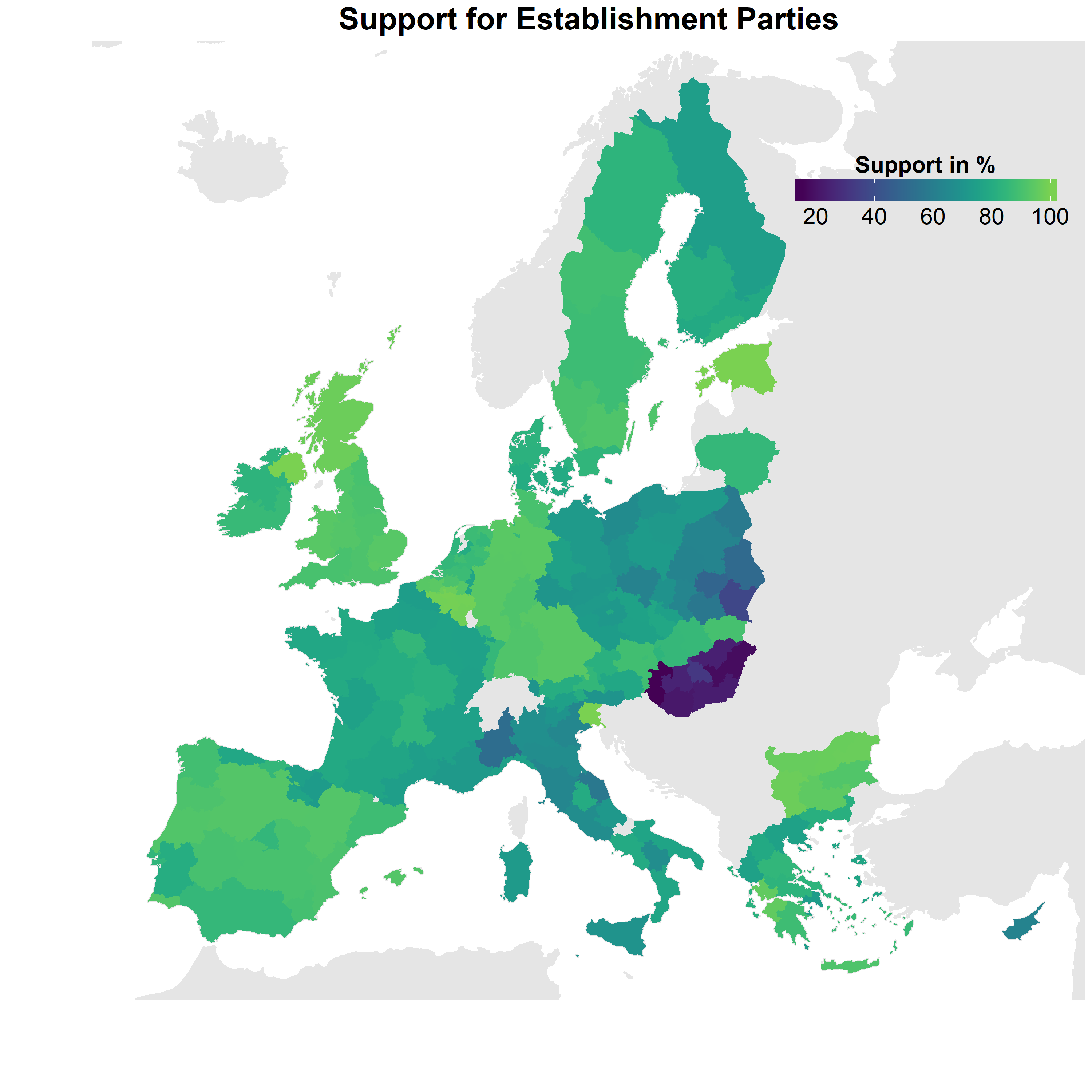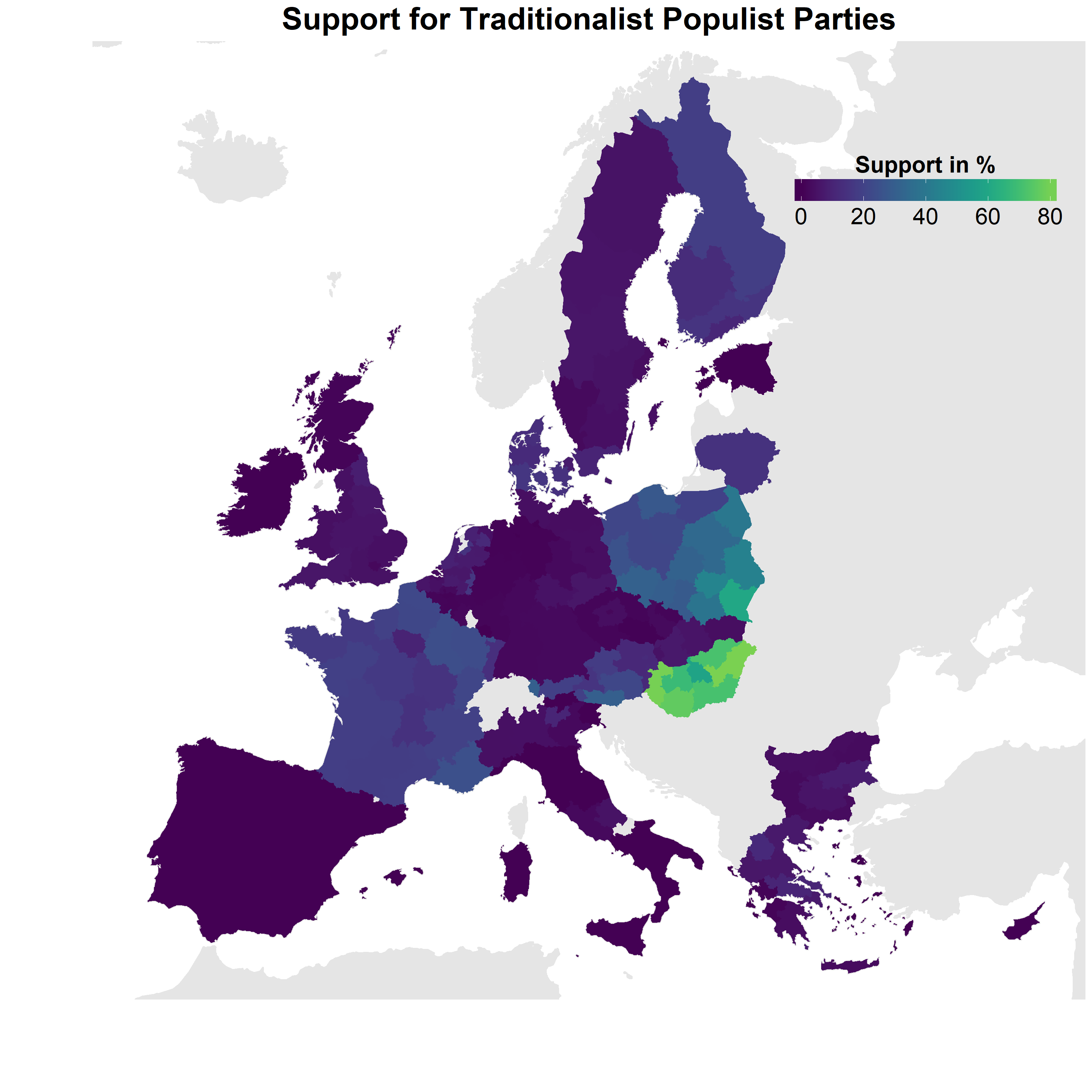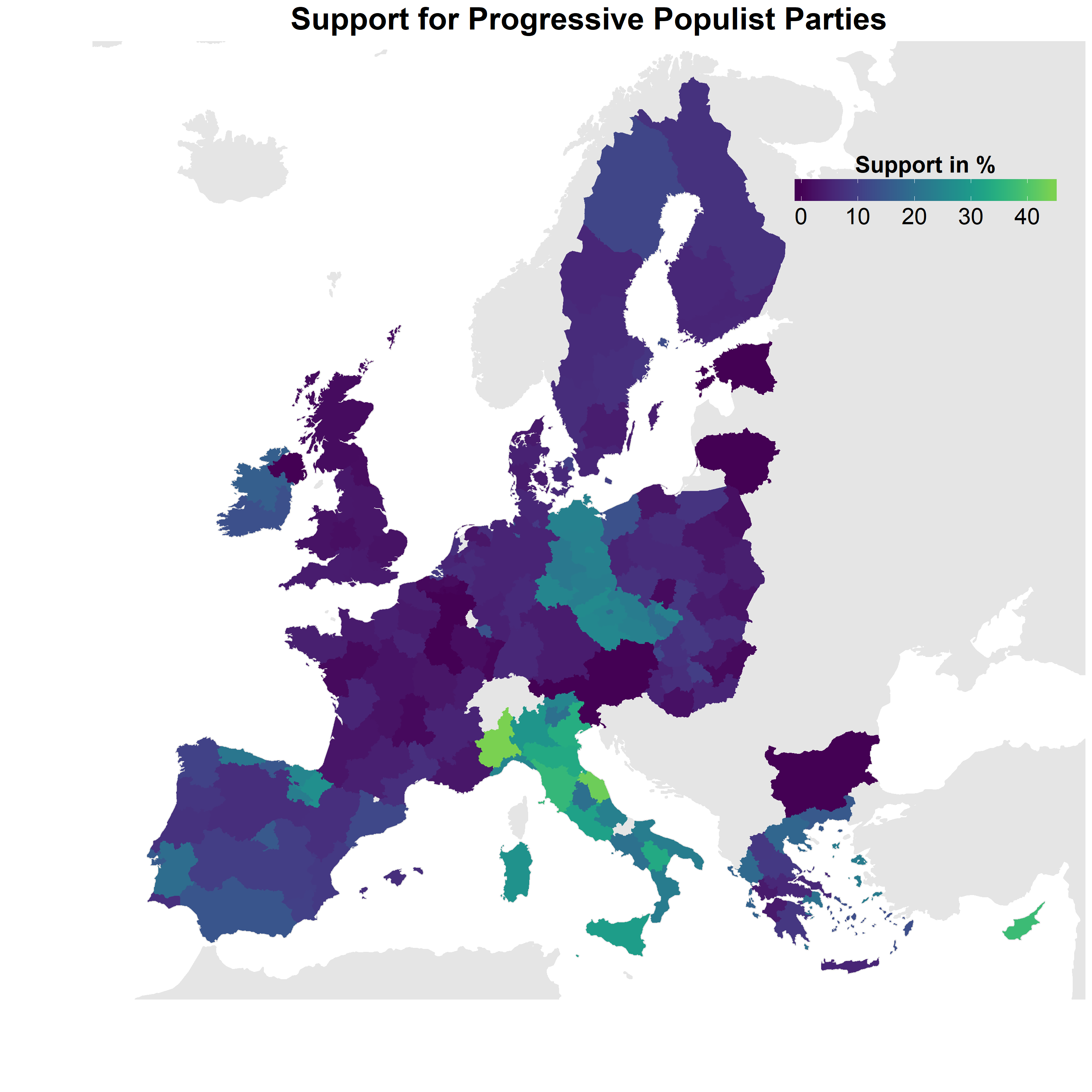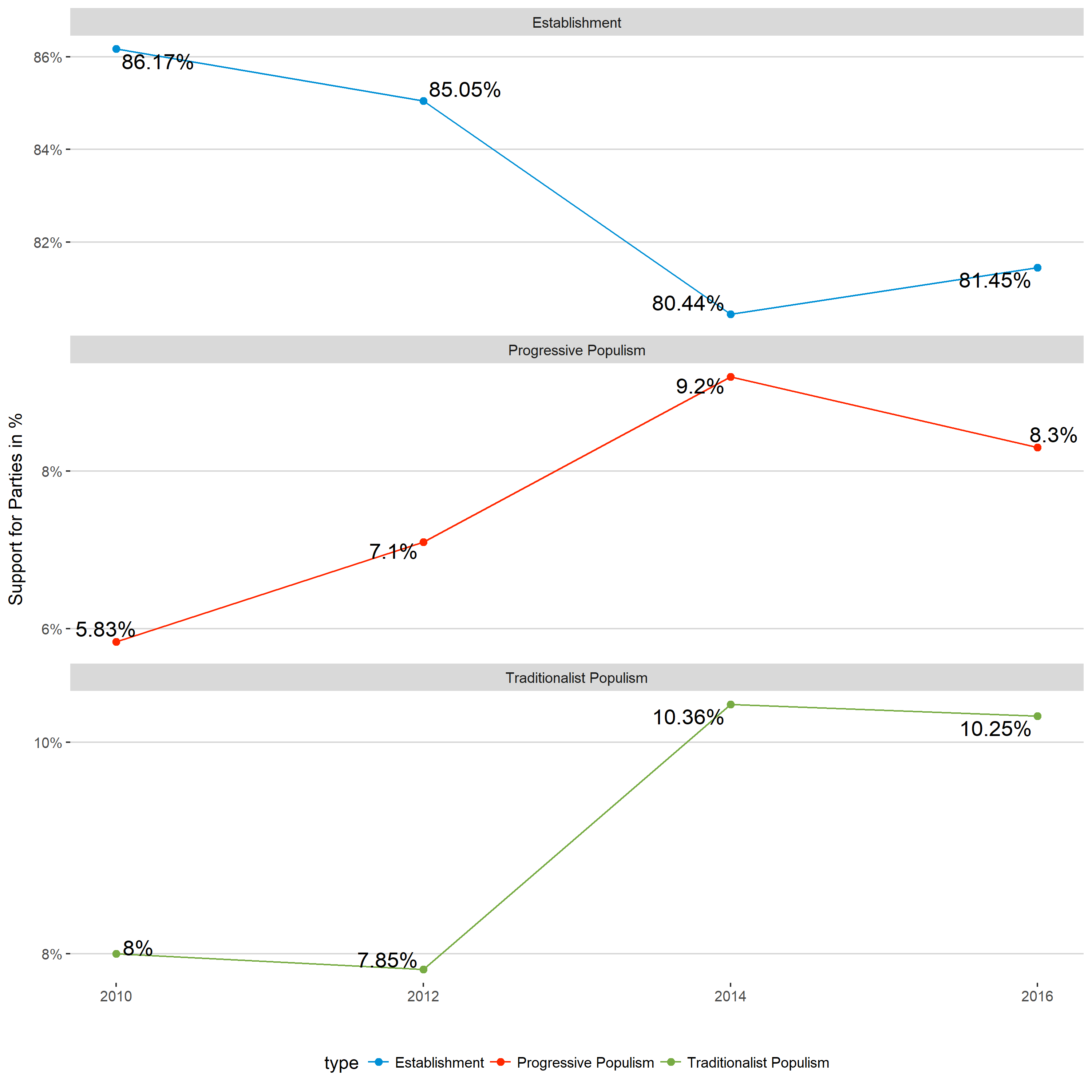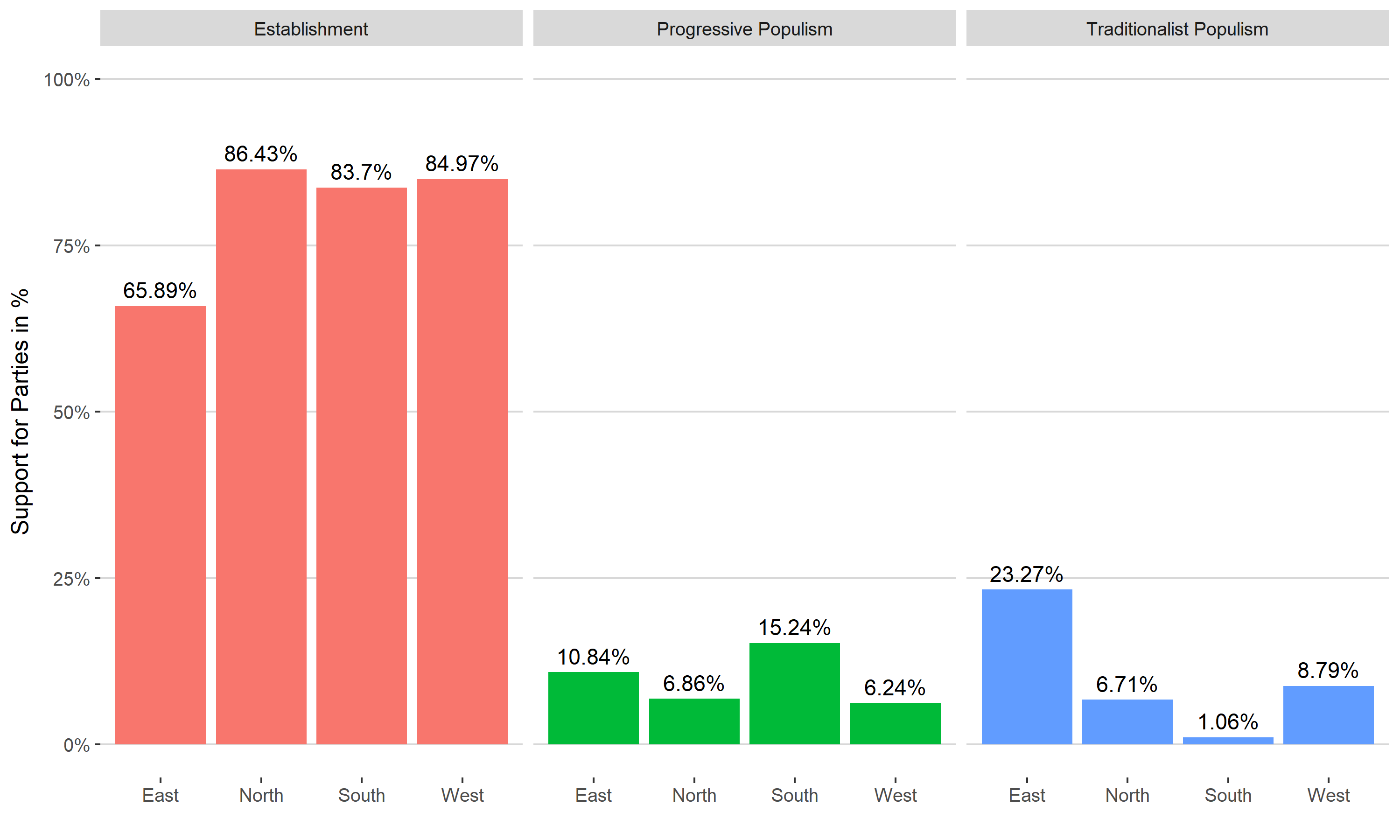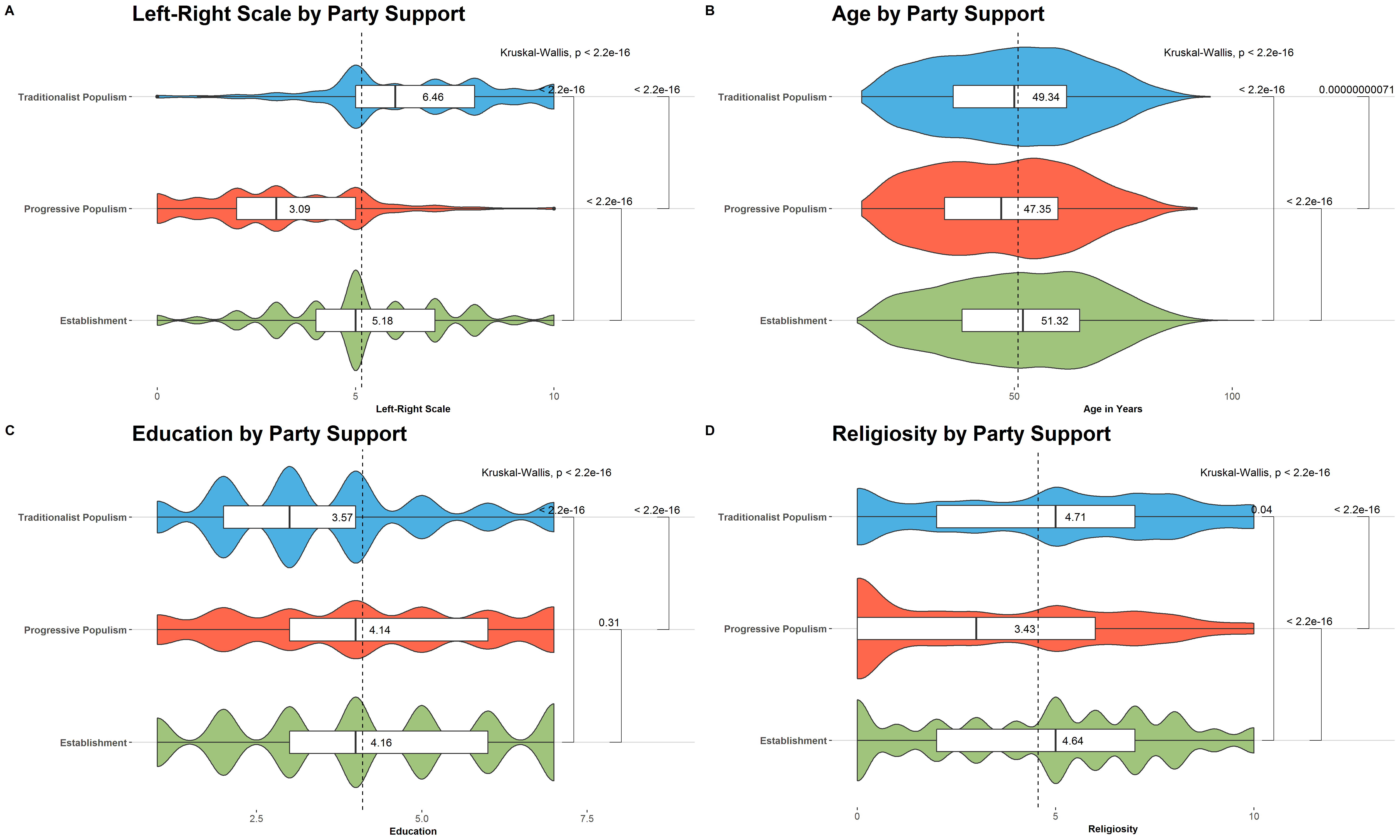Variants of Populism
Support for Populism in 22 European countries
Marlon Schumacher1, Quynh Nga Nguyen2 & Fabio Votta3
08-06-2018
1 E-Mail: M.C.Schumacher@live.de
2 E-Mail: nga.nguyen@scpobx.fr
3 E-Mail: fabio.votta@gmail.com
Slides available at variants-of-populism.netlify.com/
Goal:
Conceptualize and measure populism in a way that takes into account the multidimensionality of the phenomenon.
Challenges & Shortcomings
Challenges & Shortcomings
1st Challenge: The never ending confusion
Challenges & Shortcomings
1st Challenge: The never ending confusion
Populists are...
Challenges & Shortcomings
1st Challenge: The never ending confusion
Challenges & Shortcomings
1st Challenge: The never ending confusion
Challenges & Shortcomings
1st Challenge: The never ending confusion

Cas Mudde has been influential in the literature, suggesting that populist philosophy is a loose set of ideas that share three core features: anti-establishment, authoritarianism, and nativism.
Cas Mudde has been influential in the literature, suggesting that populist philosophy is a loose set of ideas that share three core features: anti-establishment, authoritarianism, and nativism.
Inglehart & Norris (2016)
Cas Mudde has been influential in the literature, suggesting that populist philosophy is a loose set of ideas that share three core features: anti-establishment, authoritarianism, and nativism.
Inglehart & Norris (2016)
Mudde, C. (2007). Populist radical right parties in Europe (Vol. 22, No. 8). Cambridge: Cambridge University Press.
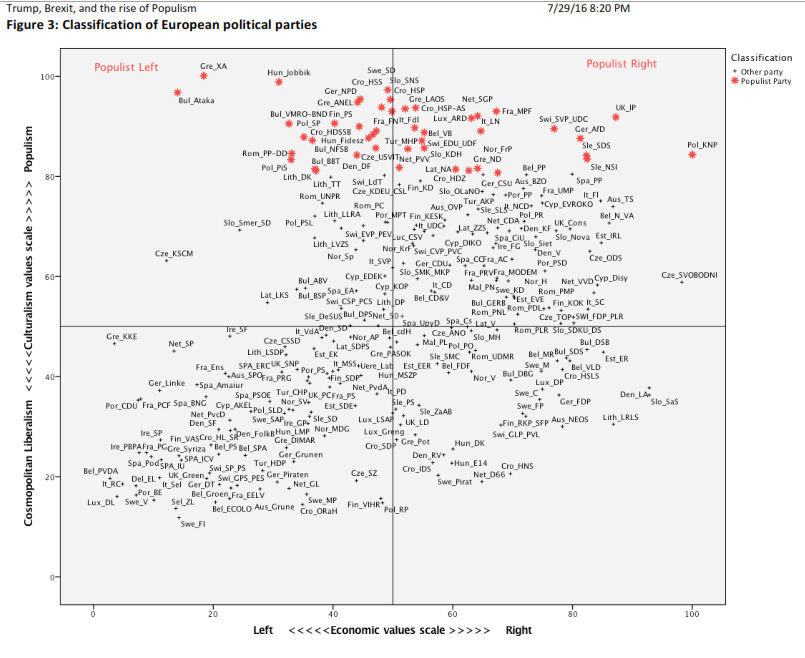
Challenges & Shortcomings
To study the populist phenomenon means...
Challenges & Shortcomings
Challenges & Shortcomings
What is populist about populism?
Challenges & Shortcomings
What is populist about populism?
- Organization?
Challenges & Shortcomings
What is populist about populism?
Organization?
Communication?
Challenges & Shortcomings
What is populist about populism?
Organization?
Communication?
Ideology?
Challenges & Shortcomings
What is populist about populism?
Organization?
Communication?
Ideology?
All at once?
Challenges & Shortcomings
What is populist about populism?
Organization?
Communication?
Ideology?
All at once?
=> Populism has a "chameleonic" character (Taggart 2000)
Challenges & Shortcomings
Populism as a thin centered ideology (Mudde & Kaltwasser 2017):
Challenges & Shortcomings
Populism as a thin centered ideology (Mudde & Kaltwasser 2017):
- Two groups: "pure people" vs. "corrupt elites"
Challenges & Shortcomings
Populism as a thin centered ideology (Mudde & Kaltwasser 2017):
Two groups: "pure people" vs. "corrupt elites"
Politics should express "volonté générale"
Challenges & Shortcomings
Populism as a thin centered ideology (Mudde & Kaltwasser 2017):
Two groups: "pure people" vs. "corrupt elites"
Politics should express "volonté générale"
But who are the people?
Challenges & Shortcomings
Populism as a thin centered ideology (Mudde & Kaltwasser 2017):
Two groups: "pure people" vs. "corrupt elites"
Politics should express "volonté générale"
But who are the people?
2nd Challenge: The variants of populism
Challenges & Shortcomings
Populism as a thin centered ideology (Mudde & Kaltwasser 2017):
Two groups: "pure people" vs. "corrupt elites"
Politics should express "volonté générale"
But who are the people?
2nd Challenge: The variants of populism
Left/Right?
Challenges & Shortcomings
Populism as a thin centered ideology (Mudde & Kaltwasser 2017):
Two groups: "pure people" vs. "corrupt elites"
Politics should express "volonté générale"
But who are the people?
2nd Challenge: The variants of populism
Left/Right?
Liberal/Illiberal?
Challenges & Shortcomings
Populism as a thin centered ideology (Mudde & Kaltwasser 2017):
Two groups: "pure people" vs. "corrupt elites"
Politics should express "volonté générale"
But who are the people?
2nd Challenge: The variants of populism
Left/Right?
Liberal/Illiberal?
... Progressive/Traditionalist.
Data & Methods
Data & Methods
CHES Dataset
Positions of 218 political parties in 22 European countries on european and national policy issues.
Data & Methods
CHES Dataset
Positions of 218 political parties in 22 European countries on european and national policy issues.
Minimalist Definition of Populism
- Salience of anti-establishment and anti-elite rhetoric
- Euroskepticism (attitudes towards European integration)
Data & Methods
CHES Dataset
Positions of 218 political parties in 22 European countries on european and national policy issues.
Minimalist Definition of Populism
- Salience of anti-establishment and anti-elite rhetoric
- Euroskepticism (attitudes towards European integration)
Progressive vs. Traditionalist Populism
- Green-Alternative-Libertarian (GAL) and Traditional-Authoritarian-Nationalist (TAN)
- Position on social lifestyle (e.g. homosexuality)
- Position on civil liberties vs. law and order
Data & Methods
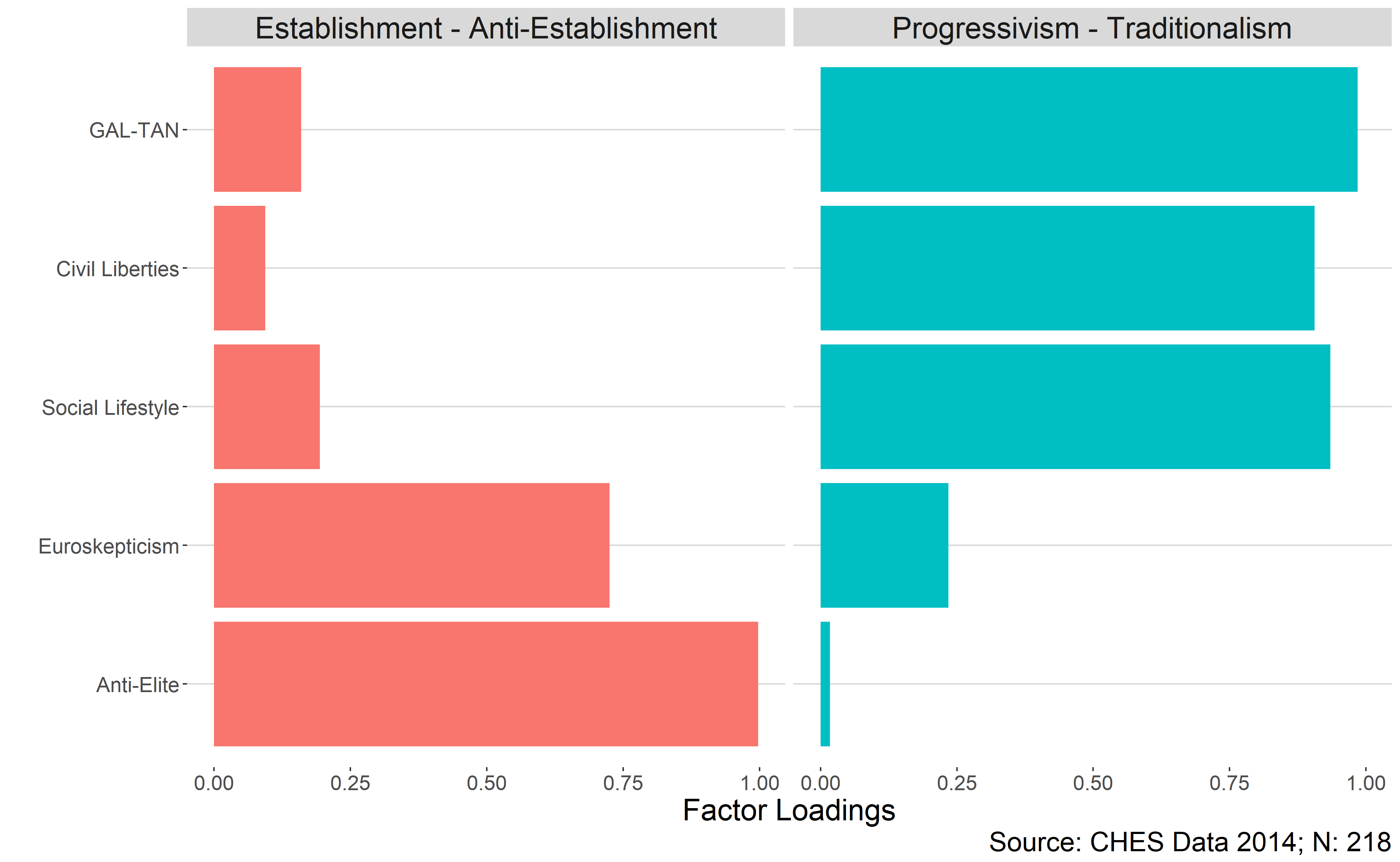
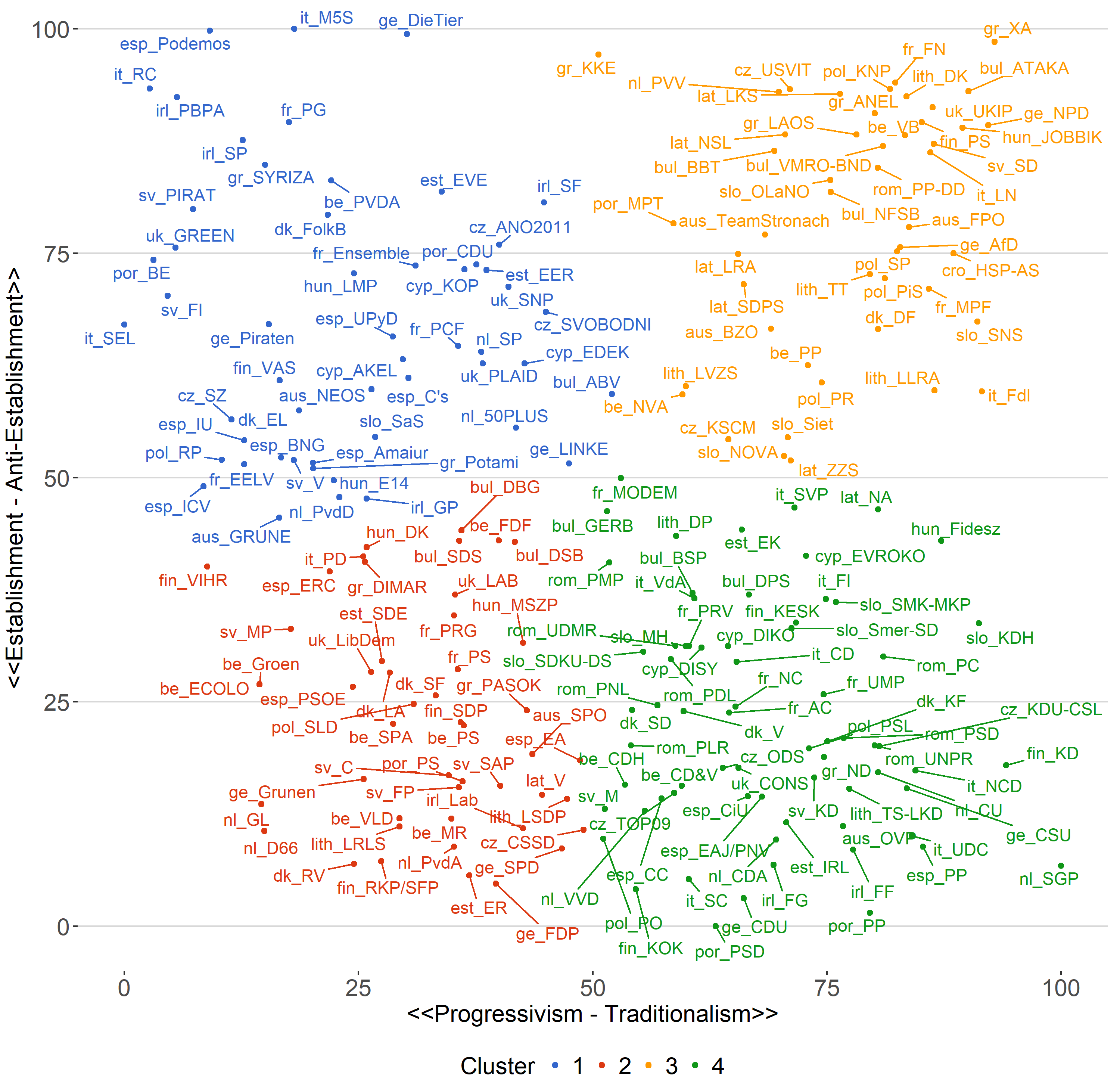
Data & Methods
Merging with ESS (Round 5-8: 2010-2016)
Two variables will be used to measure our dependent variable:
- What party did you vote for in the last national election?
- Which party is closest to your views?
Data & Methods
Merging with ESS (Round 5-8: 2010-2016)
Two variables will be used to measure our dependent variable:
- What party did you vote for in the last national election?
- Which party is closest to your views?
Resulting DV has three categories:
Support for Establishment/Traditionalist & Progressive Populist Parties
Data & Methods
Merging with ESS (Round 5-8: 2010-2016)
Two variables will be used to measure our dependent variable:
- What party did you vote for in the last national election?
- Which party is closest to your views?
Resulting DV has three categories:
Support for Establishment/Traditionalist & Progressive Populist Parties
Bayesian Multinomial Regression:
Independent Variables:
Economic Insecurity, Unemployment, Welfare, Anti-Immigration Sentiment, Age, Education, Sex, Left-Right Scale, Religiosity, Government Satisfaction, Trust in Global Governance, Rural vs. Urban, Regional dummies (East, West, North and Southern Europe) and temporal dummies (2010, 2012, 2014 and 2016)
Total: 68.403 respondents in 22 countries
Results
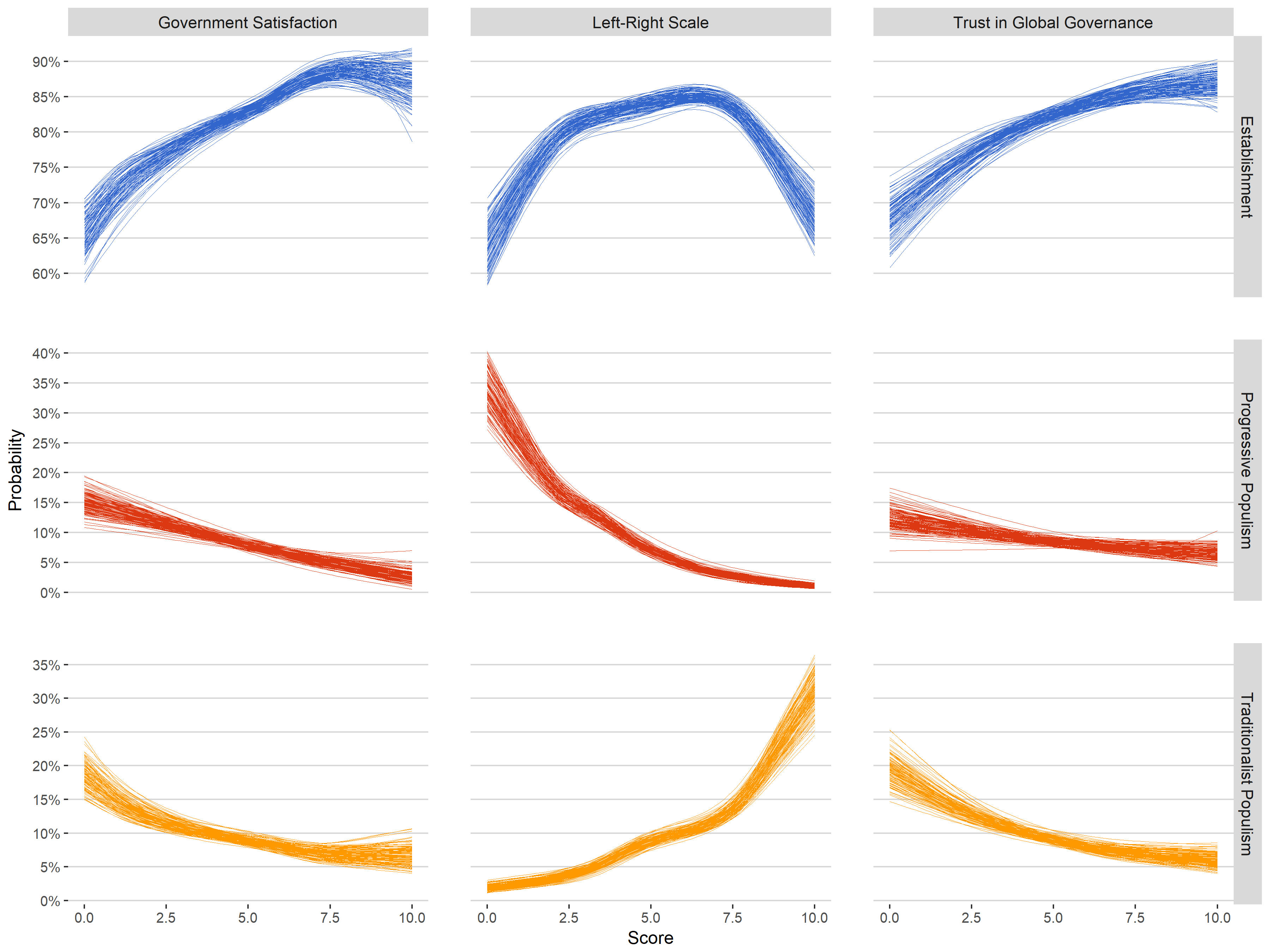
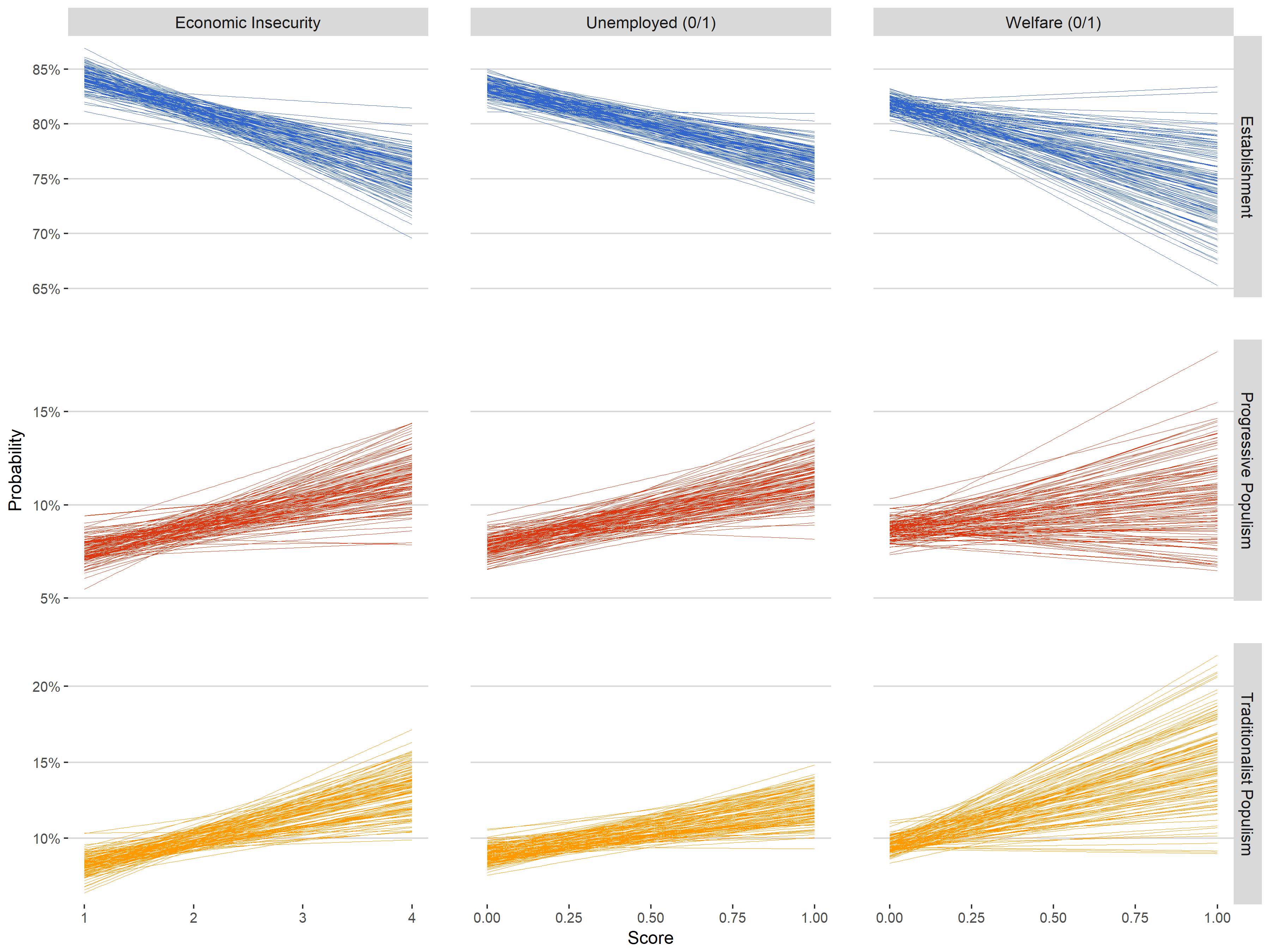
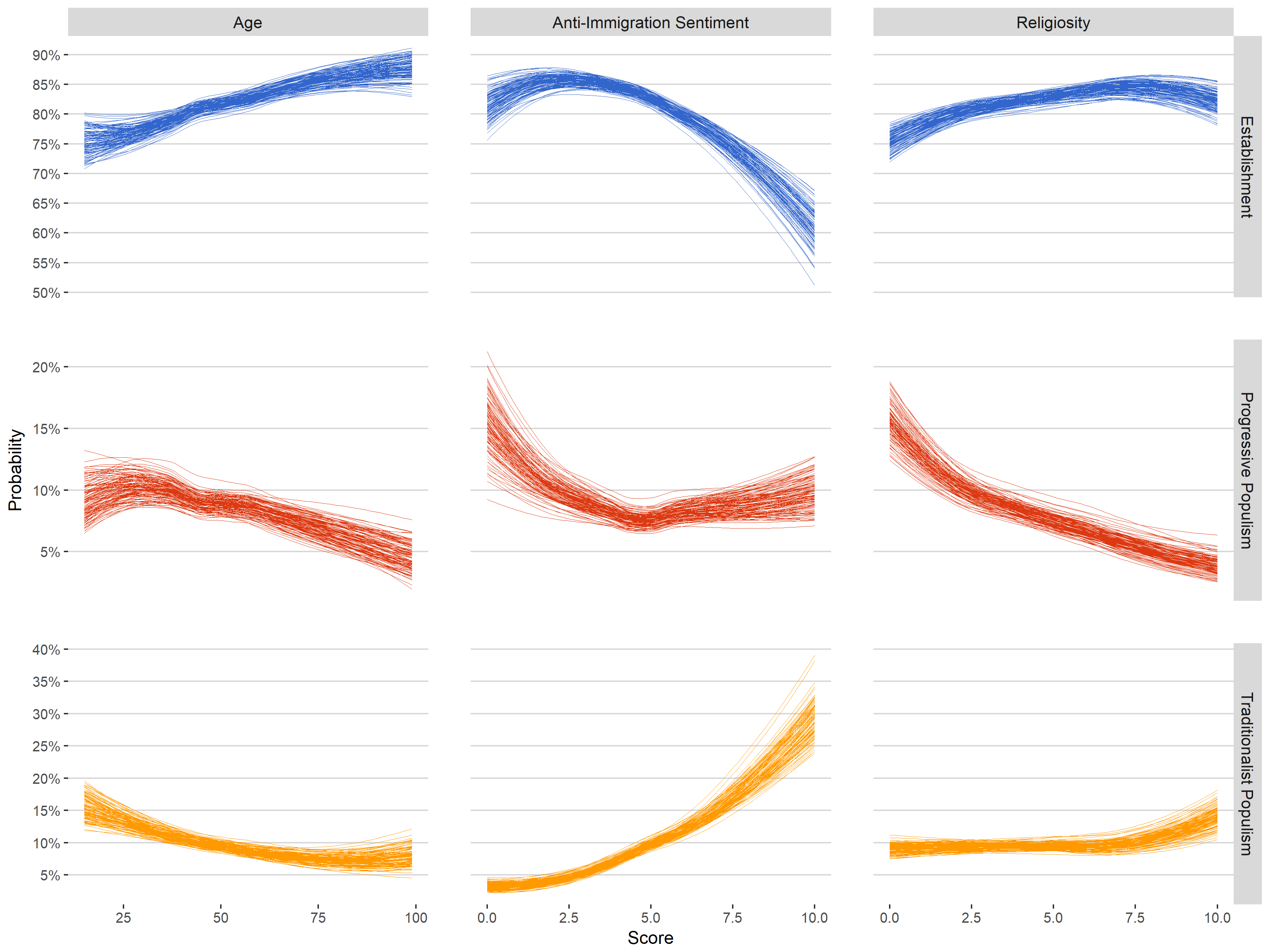
Conclusions
Conclusions
- Results of Inglehart & Norris 2016 could mostly be reproduced
Conclusions
Results of Inglehart & Norris 2016 could mostly be reproduced
Conceptualization/Classification seems to be appropriate
- should be checked/validated by others in the future (too broad?)
- correlation with other measures
- some communist parties may represent special cases
Conclusions
Results of Inglehart & Norris 2016 could mostly be reproduced
Conceptualization/Classification seems to be appropriate
- should be checked/validated by others in the future (too broad?)
- correlation with other measures
- some communist parties may represent special cases
Many missing values (include non-aligned/abstainees category?)
Conclusions
Results of Inglehart & Norris 2016 could mostly be reproduced
Conceptualization/Classification seems to be appropriate
- should be checked/validated by others in the future (too broad?)
- correlation with other measures
- some communist parties may represent special cases
Many missing values (include non-aligned/abstainees category?)
Future research should take the multidimensionality of populism into account
- specifically avoid conflating right-wing populism with populism in general
Thanks for Listening!
Slides: https://variants-of-populism.netlify.com/
Code and Data on GitHub

References
Inglehart, R. and Norris, P., Trump, Brexit, and the Rise of Populism: Economic Have-Nots and Cultural Backlash (2016). HKS Working Paper No. RWP16-026. Available at SSRN: https://ssrn.com/abstract=2818659 or http://dx.doi.org/10.2139/ssrn.2818659
Mudde, C., & Kaltwasser, C. R. (2017).Populism: A very short introduction. Oxford UniversityPress
Taggart, P. (2000). Populism. Buckingham PA. Open University Press
Appendix
